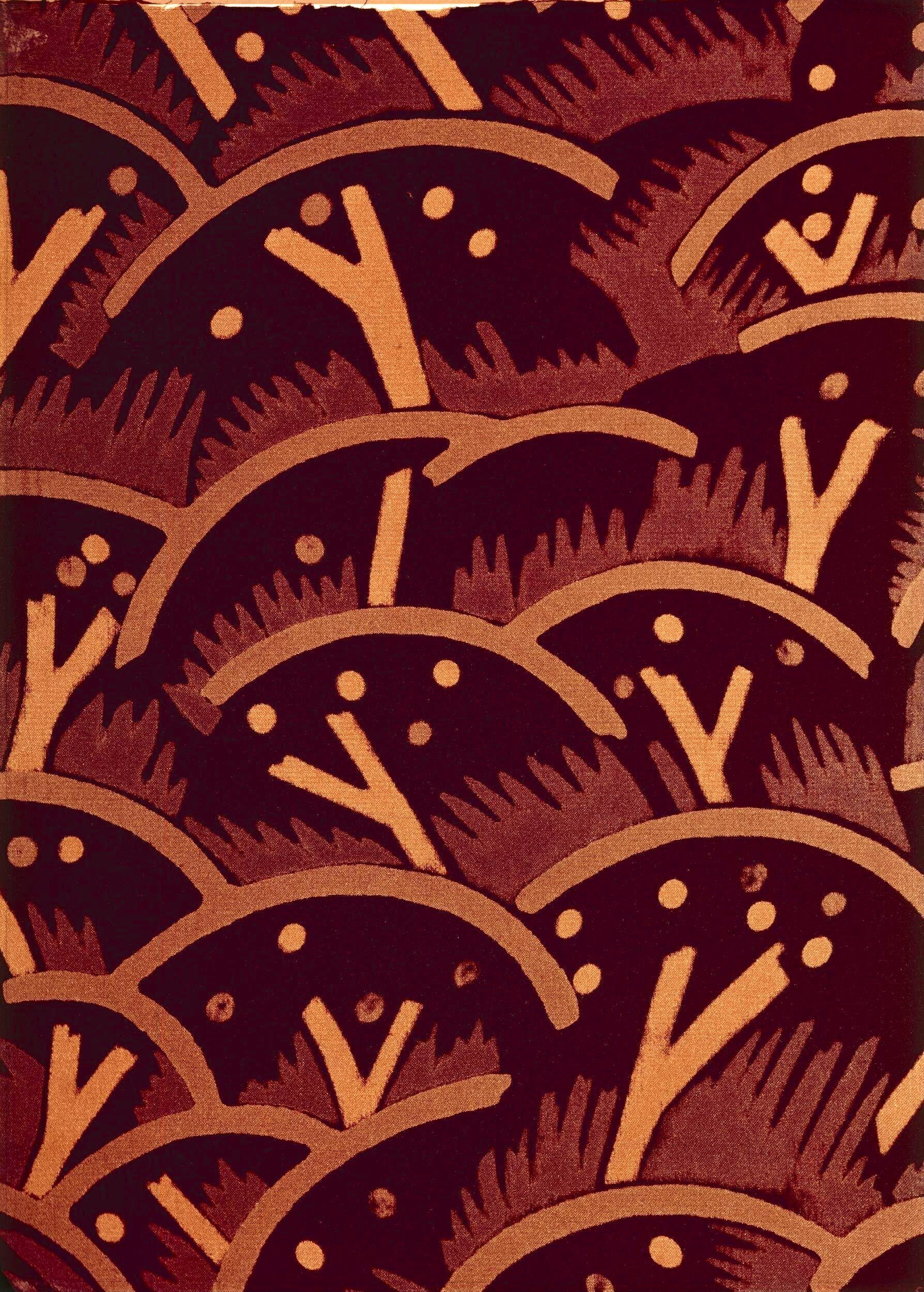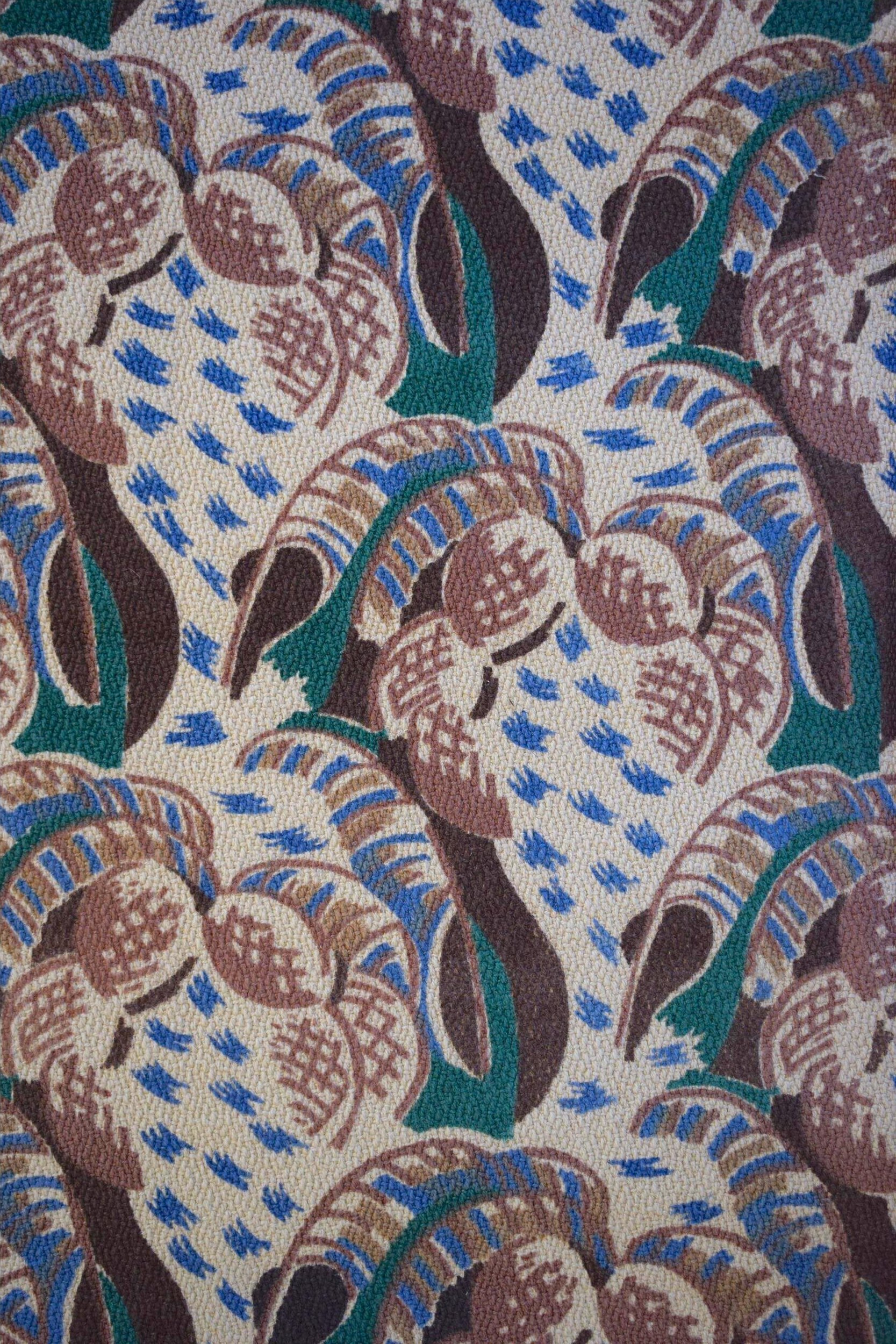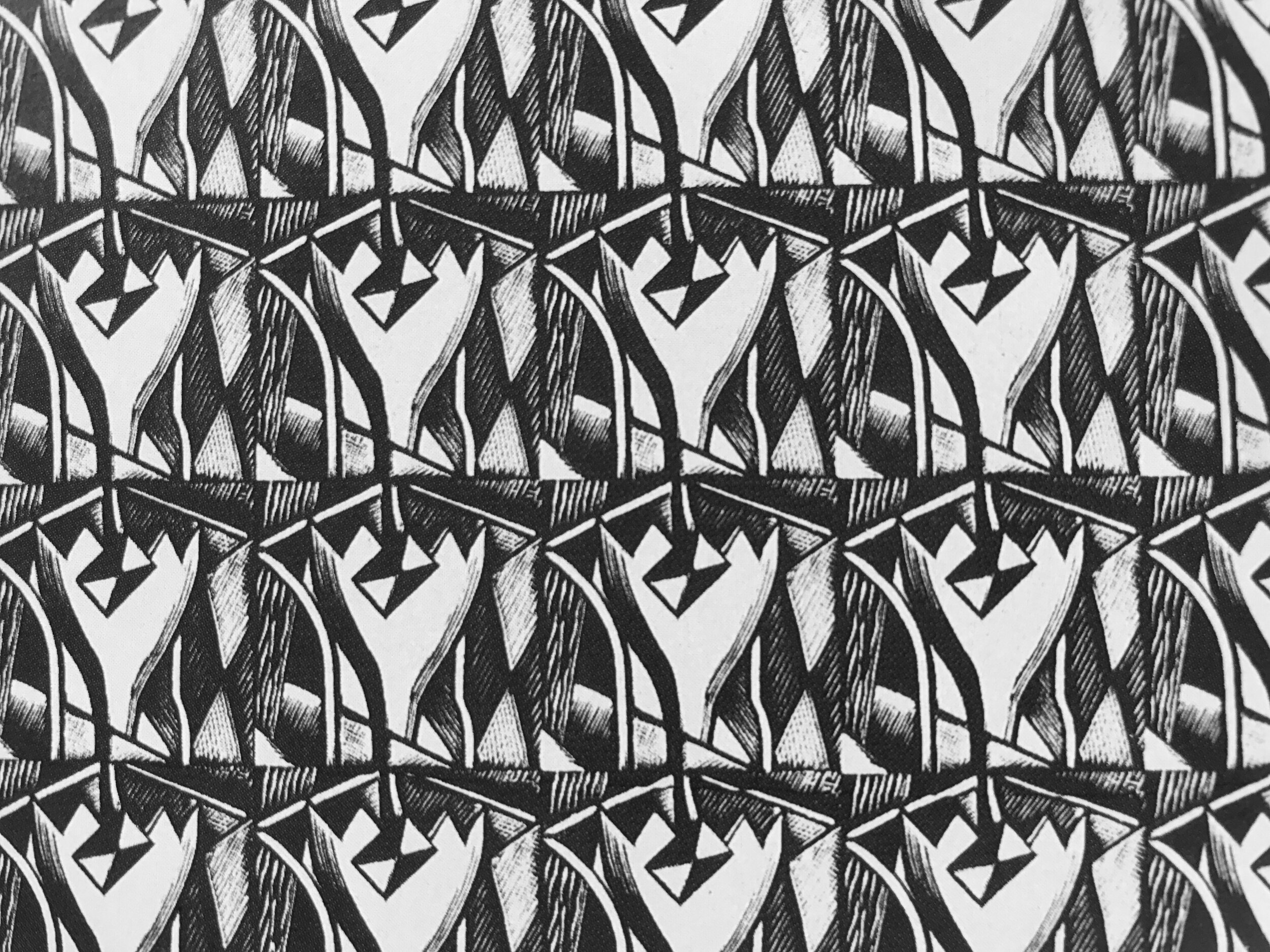PAUL NASH
Big Abstract, block printed fabric for Footprints, 1926. Image courtesy of V&A
Paul Nash (1889-1946) is best known as the celebrated landscape painter and official war artist for both world wars, but he applied his talents to many media and was in fact an accomplished pattern and textile designer.
During the 1920s and 30s, the modernist movement engendered a great deal of cross-pollination between art, design and craft - and Nash is a perfect example of an artist who boldly crossed these boundaries. In 1927 he wrote: “In England we are still prone to cling rather sentimentally to the idea of the Fine Arts … we should begin to consider patterns as important as pictures.”
Many pioneering textile studios began commissioning artists to design original prints for them during the interwar years. Nash designed for several of them, including Footprints, Cresta Silks, Old Bleach Linen Co and Donald Bros (I’ll be writing about these firms in future newsletters!) His patterns are bold and dynamic - some purely geometric, but many drawing abstract forms from the natural world. Most of his design work started out as wood engravings - he even taught the subject at the RCA to the likes of Enid Marx, Eric Ravilious and Edward Bawden.
Left: Cherry Orchard, Screen-printed dress silk for Cresta Silks, 1932.
Right: Romney Marsh, Screen-printed furnishing fabric for Calico Printers' Association, 1936. Images courtesy of V&A
Nash was apparently a perfectionist when it came to his prints. Four of his designs were block-printed by Footprints in the late 1920s but, unhappy with the quality of the printing, he transferred to Cresta Silks, whose owner Tom Heron was equally exacting.
He also worked closely with the Curwen Press during the 1920s, a printing press at the vanguard of British printmaking, whose aim was ‘to put the spirit of joy into printed things’. I designed a collection of patterns inspired by the Curwen Press, which you can see here. In 1928, they published a beautiful little book of patterned papers - most of which were block printed - and Nash contributed 4 designs and wrote the book’s introduction, praising the art of pattern making.
Left: Pattern paper for Wagner's Music Drama of the Ring by L Archier Leroy, 1925.
Right: Crocus pattern paper for A Specimen Book of Pattern Papers Designed for and in Use at the Curwen Press, 1928.
It seems that designing patterns was a form of escapism for Nash. He wrote: “I have become lately more interested in woodcut patterns than in woodcut pictures. It is always a relief to be rid of the responsibility of representation. To concern oneself solely with the problem of formal relationships is to escape into a new world.”After closely documenting the horrors of WW1, it’s perhaps understandable that he wished to move away from depicting landscapes and 'escape' into more decorative pursuits?
There is so much more to know about Paul Nash, and many books have been written on his art, but I hope this has given you a brief introduction to his unique contribution to 20th century pattern design.






